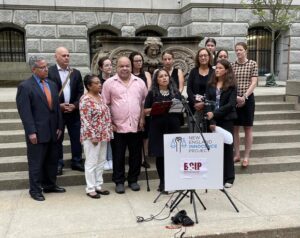Man convicted of murder in 1993 gets new trial after key evidence called into question

“The only remaining evidence was the testimony of two eyewitnesses who viewed the perpetrator at night for less than ten seconds under circumstances that we now know, based on numerous exonerations and research, create a high risk of misidentification,” the New England Innocence Project said in its earlier release, adding that one eyewitness also “described a scenario where the victim and assailant knew each other, but Mr. Rosa and the victim never knew each other.”
Rosa’s attorneys also said the eyewitnesses’ physical descriptions of the killer were inconsistent, and one of the only common physical traits they gave involved a missing tooth or a large gap between the teeth, which he did not have. They acknowledged that criminal cases once relied heavily on eyewitness testimonies, before modern DNA tests were developed, and that current research indicates mistaken witness identifications account for about half of wrongful convictions.